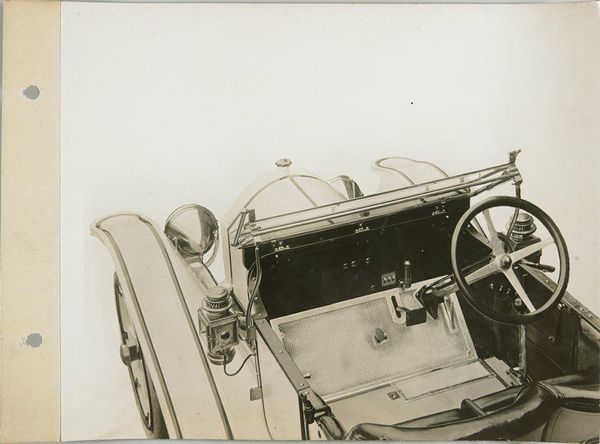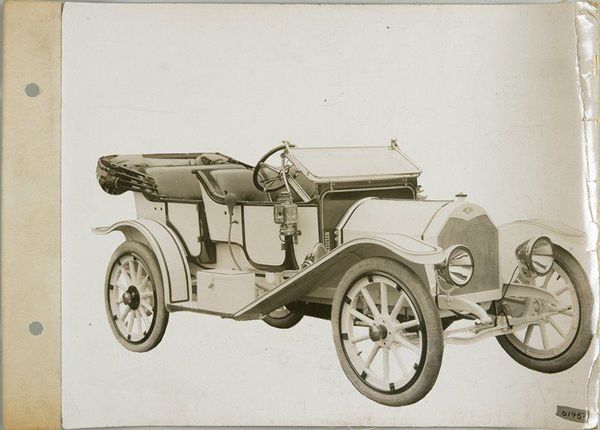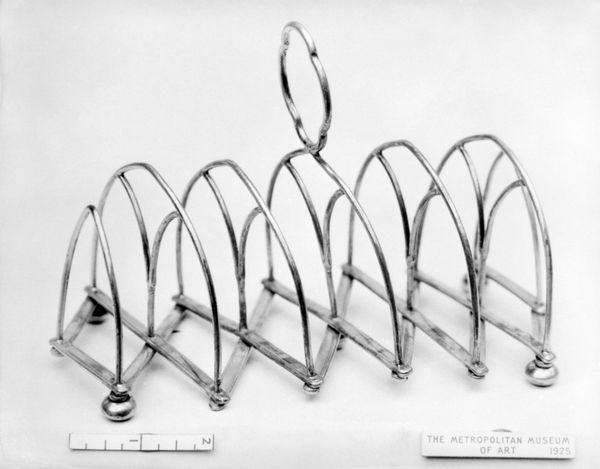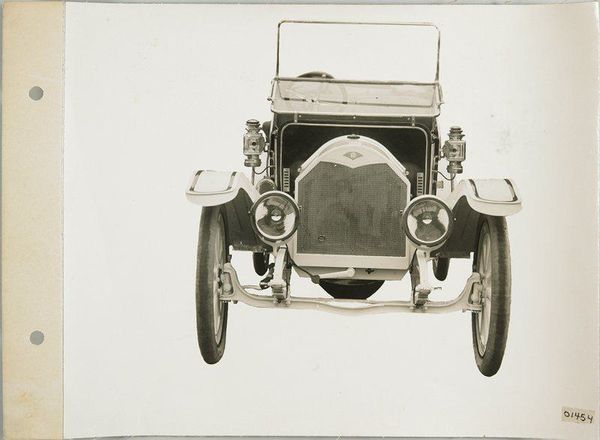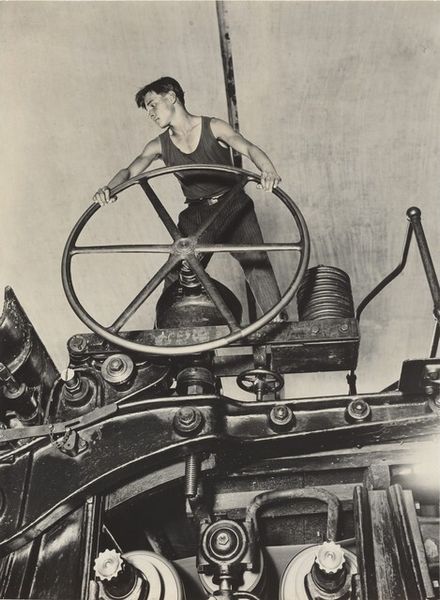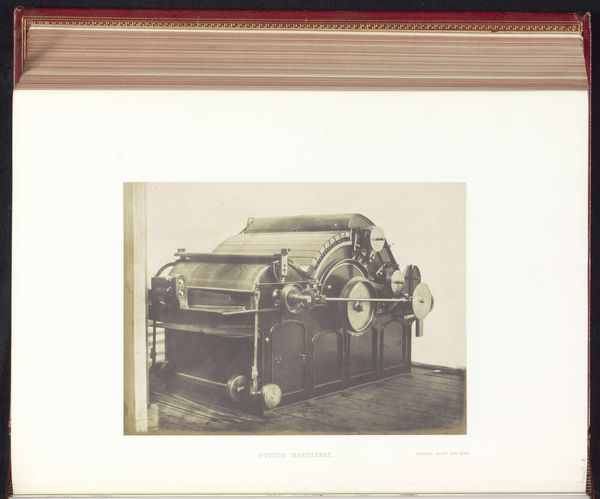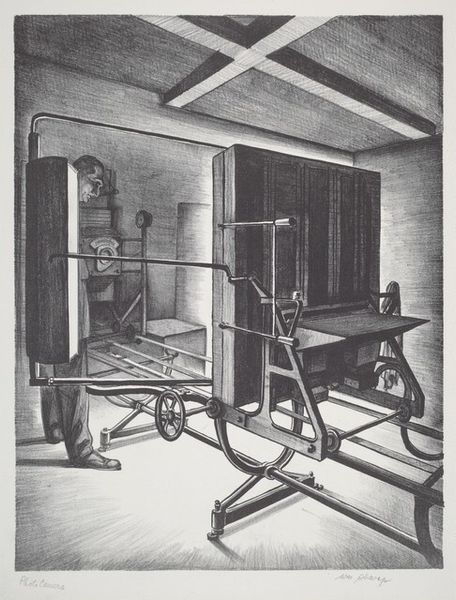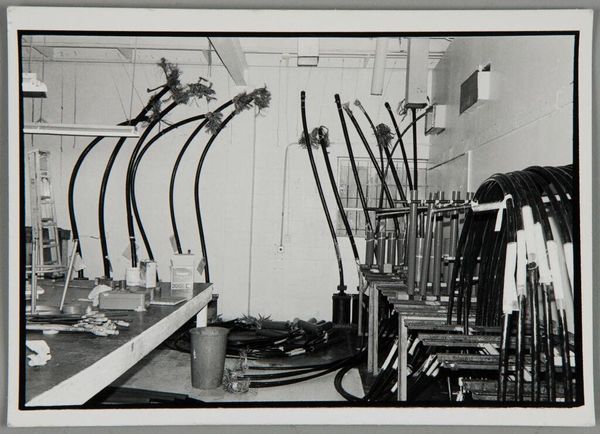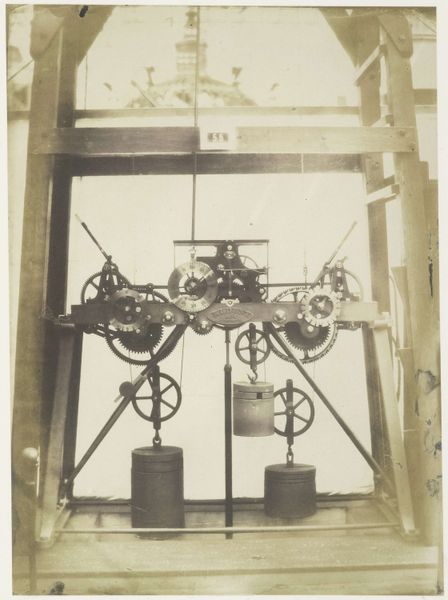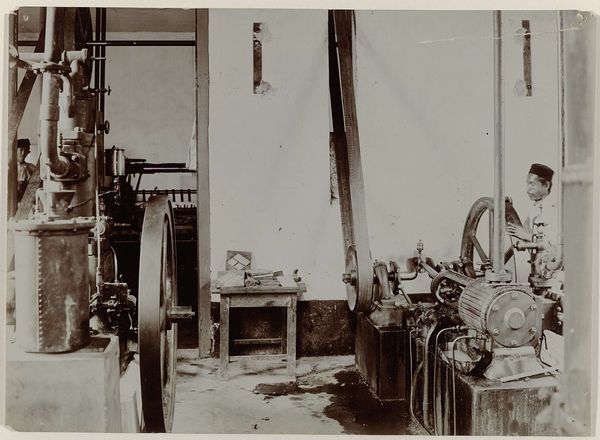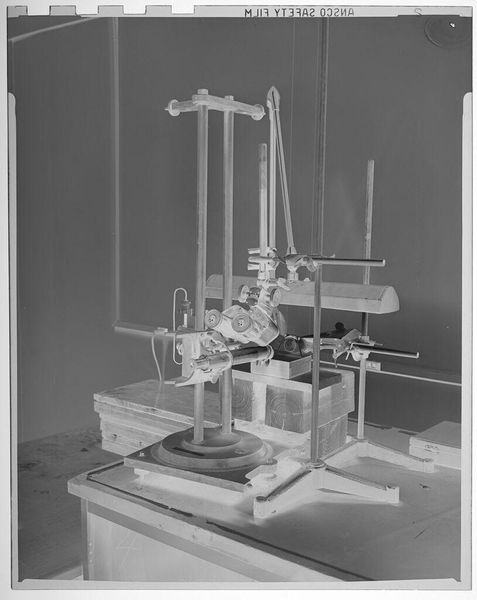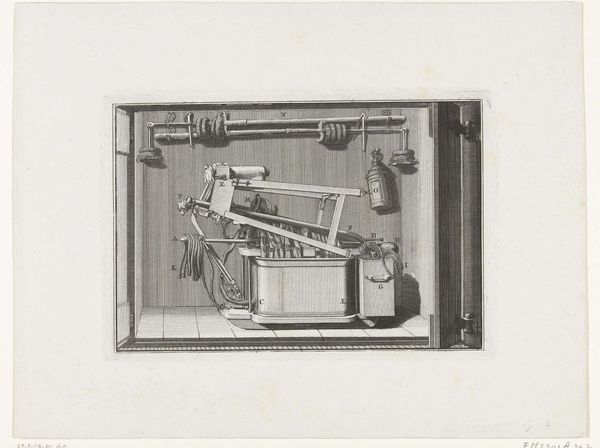
gelatin-silver-print, print, photography, gelatin-silver-print
#
portrait
#
still-life-photography
#
gelatin-silver-print
# print
#
photography
#
gelatin-silver-print
#
united-states
Dimensions: 7 3/8 x 9 3/16 in. (18.73 x 23.34 cm) (image)7 3/8 x 10 3/16 in. (18.73 x 25.88 cm) (mount)
Copyright: No Copyright - United States
Curator: Spooner & Wells, active in the United States, created this gelatin silver print, aptly titled "Untitled", around 1911. Editor: What strikes me immediately is the starkness, a kind of mechanical ballet frozen in time. It feels like peering into the very heart of early industrial ingenuity. There’s a certain romance to these exposed gears and levers, isn't there? Curator: Absolutely. The photographic focus on the automobile's mechanisms elevates what might be considered mundane materials into an object worthy of aesthetic contemplation. Look closely at the steering wheel and the intricate framework—it's almost sculptural, divorced from its functional context. Editor: That framework, though. You see the labor poured into that, the human hands shaping those metal components. We often overlook the production, the sheer material reality behind these symbols of progress and luxury. It's not just artistry; it’s about the exploitation and creation of these materials that defined the era. Curator: A valid point. And, photographically, the stark contrast achieved through the gelatin silver process renders an almost dreamlike quality to this scene. The depth of field and tone is so rich—it almost gives me a wistful impression, even in this cold, industrial landscape. Editor: Yet even the materials tell a story. Gelatin silver prints became a standard—cheap and quick—democratizing image-making like these cars democratized travel, though obviously for a certain class. How did this change who controlled narratives, not only in terms of what was depicted, but of its audience? Curator: That's a delicious question. In short, Spooner & Wells aren't just documenting the automobile; they're participating in a much wider conversation about American identity, technological advancement, and consumerism in the early 20th century. Editor: Ultimately, seeing this image pulls me in. It is not just about capturing light and form but capturing the complex relationship between human ingenuity, industrial production, and our material culture. It is also so obviously art in that act of capture. Curator: Right. There’s beauty in precision and form here, that reflects back into our human endeavor and its capacity to affect profound transformation and how we capture those moments in time.
Comments
No comments
Be the first to comment and join the conversation on the ultimate creative platform.
